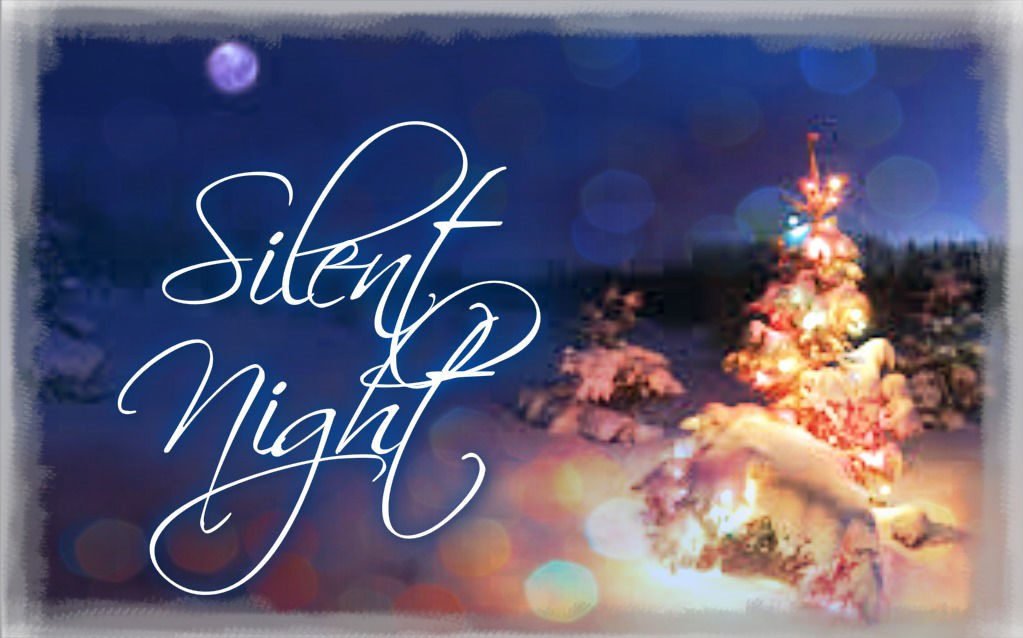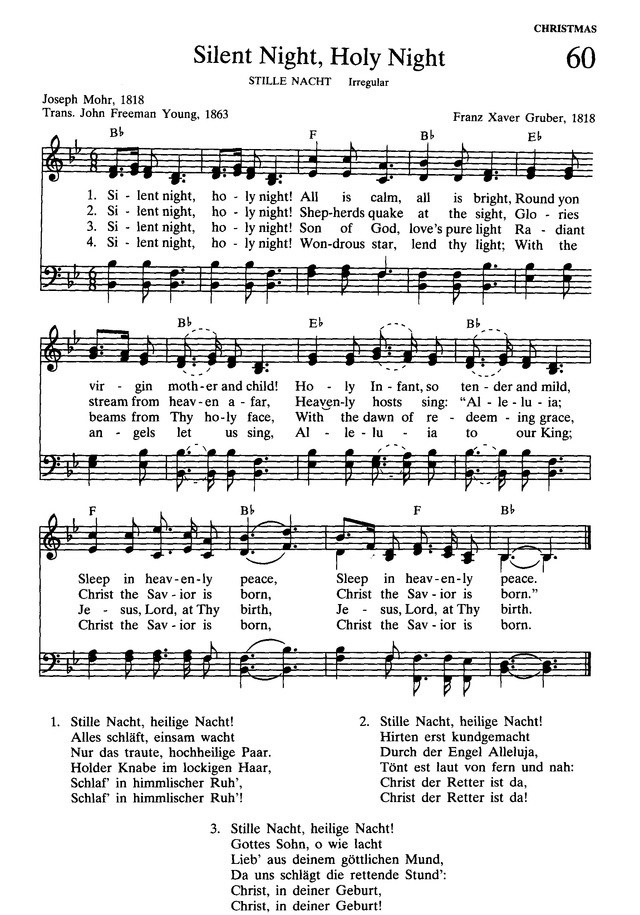Hymn Spotlight: Silent Night
Hymn Spotlight: Silent Night—celebrating 200 years
Author – Joseph Mohr, 1792-1848
English Translation – John F. Young, 1820-1885
Composer – Franz Grűber, 1787-1863
Tune Name – “Stille Nacht”

Christmas Eve, 1818….a song was born that would wing its way into the hearts of people throughout the world. Joseph Mohr was born in the lovely city of Salzburg, Austria, in 1792 . As a boy he was an active chorister in the Cathedral of Salzburg. In 1815 Mohr was ordained to the priesthood of the Roman Catholic Church. Fol-lowing his ordination, he served various parishes in the Salzburg area. It was while serving as an assistant priest in 1818, at the newly erected Church of St. Nicholas in Obernorf in the region of Tyrol, high in the beautiful Alps, that Mohr wrote the text for this favorite of all Christmas carols.
Father Mohr and Franz Grűber , the village schoolmaster and church organist, had often talked about the fact that the perfect Christmas hymn had never been written. With this goal in mind, and after he had received word that his own church organ would not function, Father Mohr decided that he must write his own Christmas hymn immediately, in order to have music for the special Christmas Eve Mass and to avoid disappointing his faithful congregation. Upon completing the text, he took his words to Franz Grűber, who exclaimed when he saw them, “Friend Mohr, you have found it – the right song – God be praised!”
Soon Grűber completed his task of writing the right tune for the new text. His simple but beautiful music blend-ed perfectly with the spirit of Father Mohr’s words. The hymn was completed in time for the Christmas Eve Mass, and Father Mohr and Franz Grűber sang their hymn to the accompaniment of Grűber’s guitar. The hymn made a deep impact upon the parishion-ers, even as it has on succeeding generations. The passing of time seems only to add to its appeal.
Neither Mohr nor Grűber intended that their hymn would be used outside of their little mountain vil-lage area. However, it is reported that within a few days after the Christmas Eve Mass, the organ re-pairman Karl Maurachen of Zillerthal, a well-known organ builder of that area, came to the church and obtained a copy of the new hymn. Through his influence the carol spread throughout the entire Tyrol region, where it became popular as a Tyrolean Folk Song. Soon various performing groups such as the well known Strasser Children’s Quartet began using the hymn in concert through-out Austria and Germany. In 1838, it first appeared in a German hymnal, where it was titled a “hymn of unknown origin.” It was first heard in the United States in 1839 when a family of Tyrolean Singers, the Rainers, used the music during their concert tour. Soon it was translated into English as well as into other languages. At least eight different Eng-lish translations are known today. The carol is presently sung each December by untold millions in all of the major languages of the world. It is a universal favorite wherever songs of the Christmas message are sung, from small chapels in the Andes to great Cathedrals in Antwerp and Rome.


